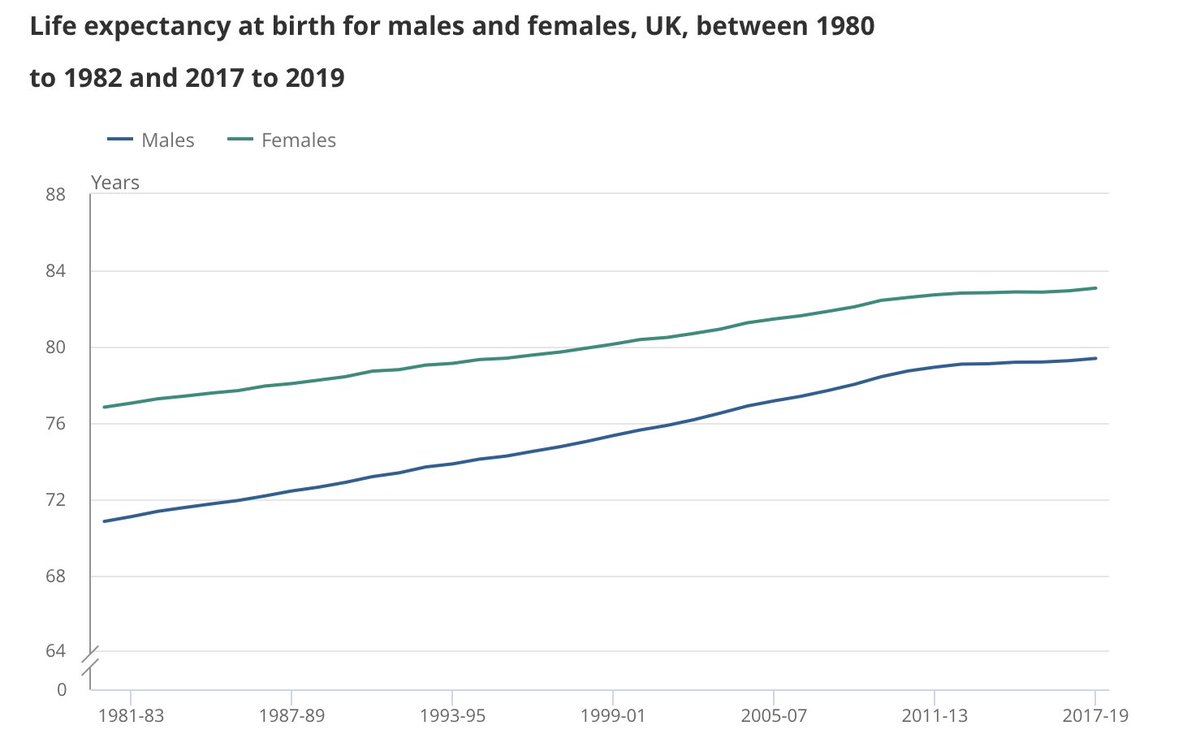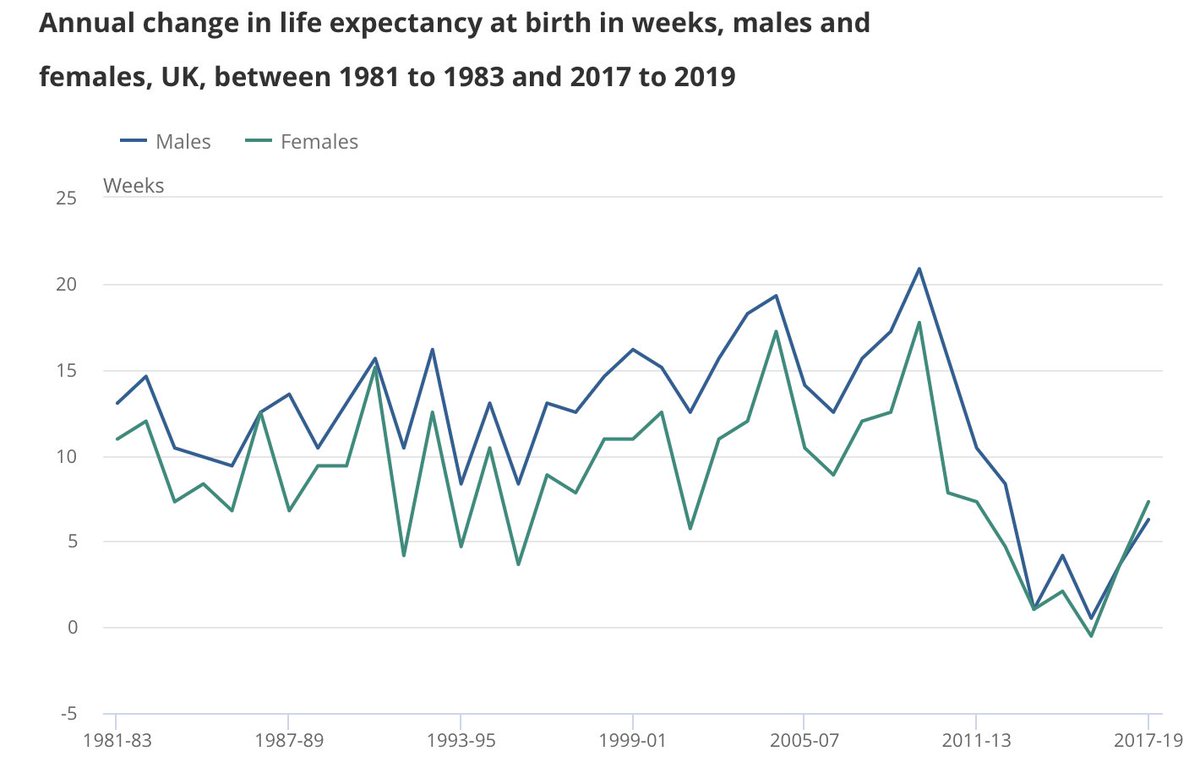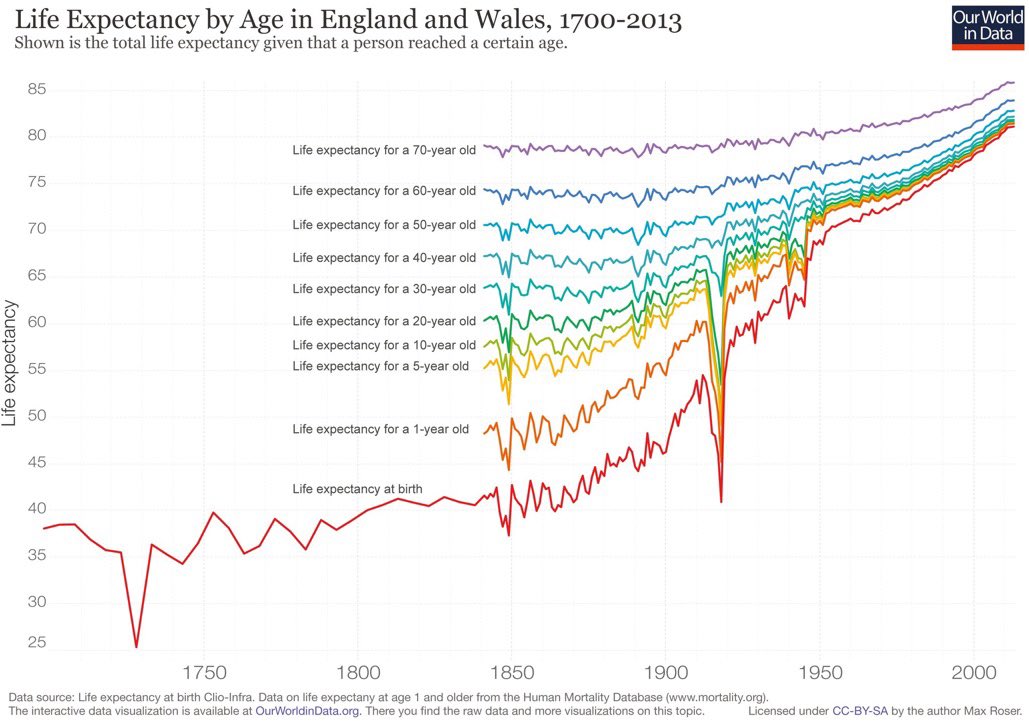I suspected that today’s ONS life expectancy release would not be met with the usual fanfare, but I guess I hadn’t anticipated complete media radio silence.
Still, it’s not the most “pandemic appropriate” news. UK life expectancy is at a new high!
What’s the story? 1/7
Still, it’s not the most “pandemic appropriate” news. UK life expectancy is at a new high!
What’s the story? 1/7

UK life expectancy at birth is up by six weeks for males and seven weeks for females. Here’s the numbers direct from Ed at the ONS 👇
Crucially though, this is just updating National Life Tables to include 2019, which had record low death rates. 2/7
Crucially though, this is just updating National Life Tables to include 2019, which had record low death rates. 2/7
https://twitter.com/Edward_Morgan/status/1309048677227532293
Life expectancy at age 65 has also increased, by around 6 weeks each for males and females.
Life expectancy at 65 is now:
83.8 years for males
86.1 years for females
Note that life expectancy at 65 is 3-4 years higher than life expectancy at birth. 3/7
Life expectancy at 65 is now:
83.8 years for males
86.1 years for females
Note that life expectancy at 65 is 3-4 years higher than life expectancy at birth. 3/7
No account is taken in these particular measures of life expectancy of observed death rates in 2020, or expert views on what death rates will look like in 2021 and beyond. It’s a mathematical calculation based on death rates in the three-year period 2017 to 2019. 4/7
Life expectancy on this measure continues to increase, as it has for decades and is expected to do in the long term.
The rate of increase has been much slower in the last decade though, as shown below. 5/7
The rate of increase has been much slower in the last decade though, as shown below. 5/7

The next few years will be highly unusual as the impact of the pandemic works through the data. Exceptionally high death rates in 2020 (and 2021?) will visibility distort life expectancy in the years ahead, as similar pandemics have done. 6/7 

There‘s another measure (“cohort life expectancy”) which incorporates views on future changes to death rates. ONS do a projection every 2 years (and CMI do a separate one annually). Incorporating short and long term impacts of COVID into these will be especially challenging! 7/7
• • •
Missing some Tweet in this thread? You can try to
force a refresh












